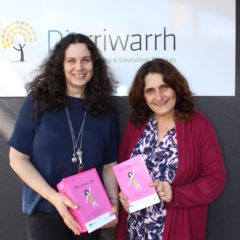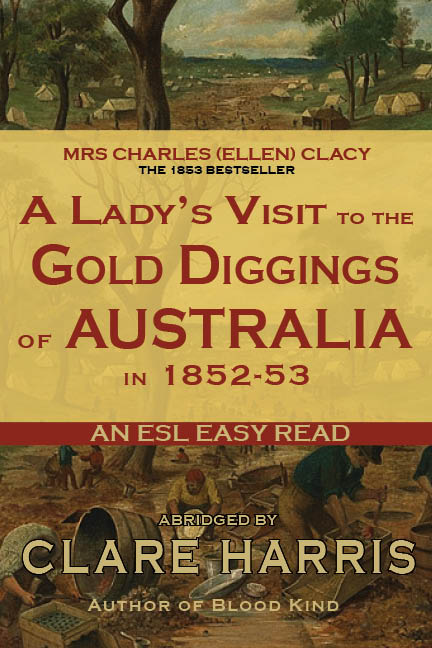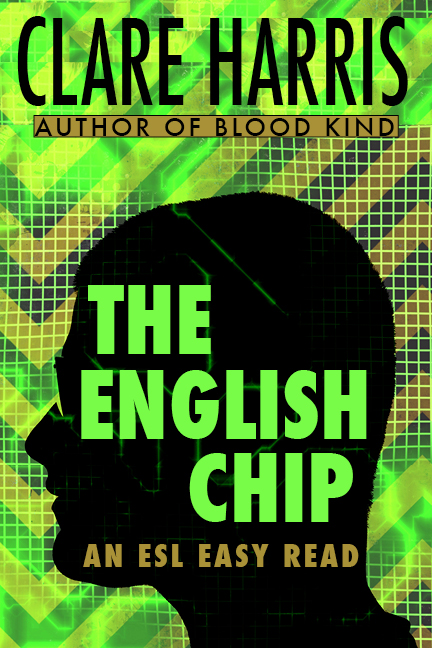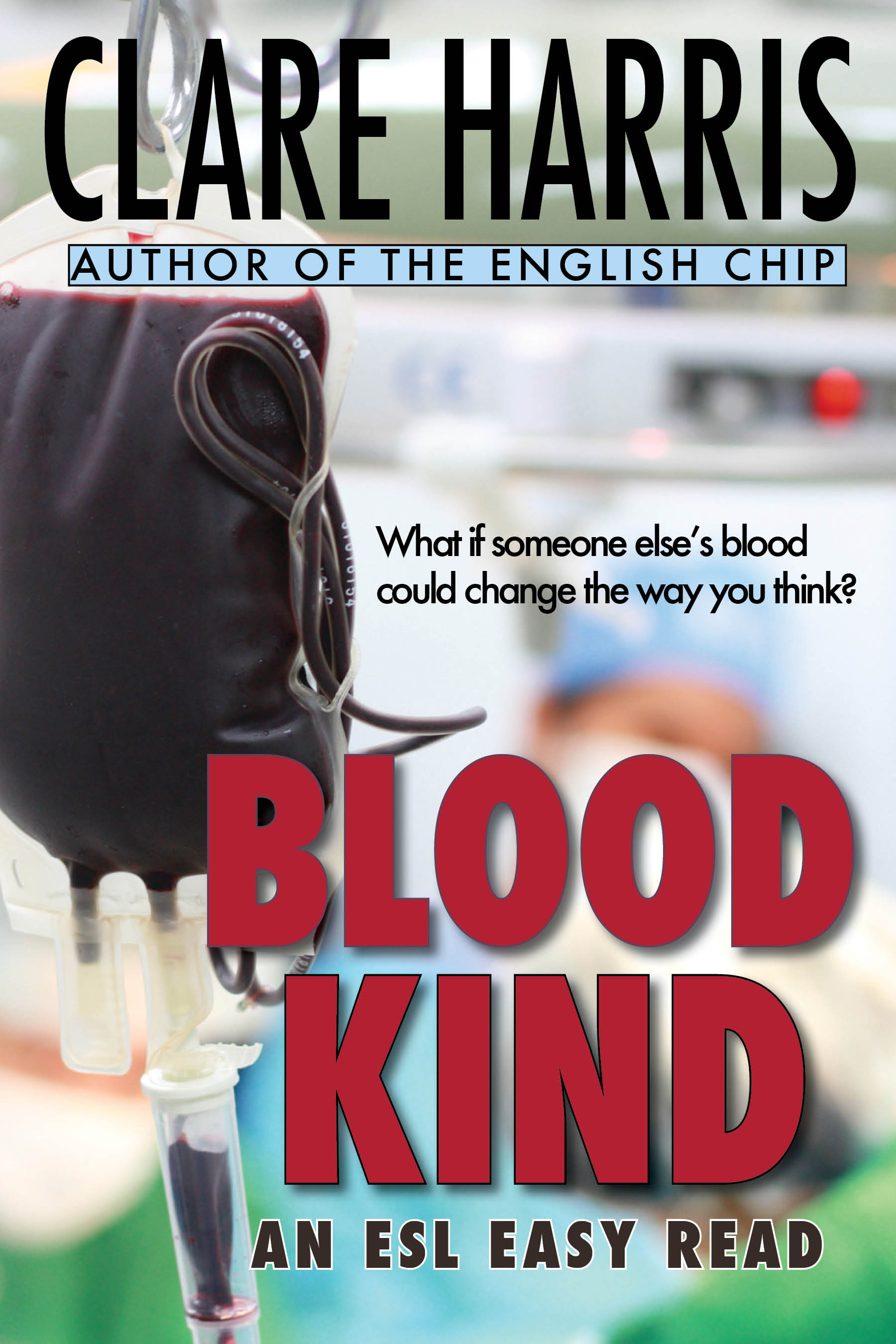Natalie Nawrocki is another ESL teacher-and-writer; when I first met her at a conference, she said she was ‘working on something’. I now know that the ‘something’ was Kim Loves Life, a free-to-download reader and workbook, available on the Djerriwarrh Community & Education Services (DC&ES) website.
Kim Loves Life was ‘inspired by one woman’s experience of breast cancer and getting treatment’. The story explores the emotional and physical issues in a simple and honest way. Even beginners could follow along with the reader, though the teacher resource (with authentic texts) is at post-beginner to intermediate level. (ACSF 2/3)
“I was sad. I was worried. I cried. I love life.”
“I bought some wigs. I bought three beautiful wigs. One wig was long and straight. One was a red colour and one was short with curls.”
I really liked the straightforward and poignant nature of this story (which is not without humour, when Kim’s friends fail to recognise her in the wigs). So I wanted to ask Natalie how this resource came about…
Natalie, what made you think of writing Kim Loves Life?
The story of this resource began at our yearly Biggest Morning Tea class fundraiser for the Cancer Council. (That’s at Djerriwarrh in Sunshine, Melbourne, where I’m a SEE teacher.) I’d invited my manager, Anita, as a guest speaker, to present on her journey with breast cancer. When she told her story, you could hear a pin drop!
After she spoke, we returned to our class activities and talked about her presentation. The students were really eager to discuss the topic and were interested in breast screening. Now of course, I’d had speakers on the topic come to my class in the past, but I noticed that Anita’s personal story was far more engaging in getting the message across.
So that was the spark – but what got things moving?
Coincidentally, shortly afterwards, I received an email on small grants available from the Cancer Council, to promote cancer screening information and services to the CALD community. I discussed the idea of applying for the small grant with Anita, and sharing her story by creating a reader that could be used in the classroom, or with individuals, to promote the topic.
She was in agreement and we went ahead with our application. We were very excited to hear that we were successful, receiving the grant of $500 to print the story.
Who worked on it?
I created the story and the pictures myself, with a great deal of in-kind assistance from teachers and staff from my organisation. One of the teachers was an artist and was happy to draw the cover picture. Then the reader was trialled in a couple of classes and we used the feedback to improve it. We also needed to consult with the funding body, to ensure they were happy with the reader and the story.
Then how did you get it out into the world?
As part of the funding, we used the money to launch the reader. The launch was well attended and everyone who came got a copy of the book. The event was a real celebration of life, with laughter yoga and a choir singing uplifting songs, all very well received.
You’ve also got a teacher guide… how did you get funding for that?
We were so happy with the outcome that we decided to apply for a second Cancer Council grant the following year. This time we received $1000, to fund a teacher resource to accompany the book.
With this funding, a group of teachers from our organisation worked on a steering committee to create an activity each. The tasks were varied and attempted to address a variety of levels. The activities were collated and trialled in classes, and we used feedback from students and other teachers to modify the tasks.
Did writing for a funding body affect the way you wrote?
During the creation of the teacher resource, the funding body asked us to modify the reader. In reality, Anita had noticed something abnormal herself, and then went for a breast screen. However, the Cancer Council wanted us to change the story to say that she discovered the problem after the breast screen.
Was that OK with her?
Anita was fine with the change, because she wanted to get the message across.
In fact she was very happy with the project and very supportive. She’s even famous now; she went to a conference and was approached by another delegate who asked, “Are you Anita from the story Kim Loves Life?” She was so surprised how someone recognised her.
I love the way that the song is sung by students… how did that happen?
Two years after that first Biggest Morning Tea, we had another, to raise funds. One of our teachers wrote the song and an intermediate class with a lot of talented students sang the song ‘Kim Loves Life,’ to accompany the reader. The song was recorded and also uploaded – you can find it on the DC&ES website.
How are you using Kim Loves Life now?
We use the reader and the teacher resource every year, when the Biggest Morning Tea comes around, and classes at DC&ES use the reader to understand the importance of screening. One student gave the reader to a relative in hospital and said she really liked it and found it helpful too.
Have the male students been included in that?
Both men and women are using the reader at our centre. The men have been very interested in this information for their wives or female family members. One teacher organised a speaker for prostate cancer for the men as well.
I love using stories and I suspect you do too…
Yes, I believe that stories are a very effective tool to provide students with information that’s engaging as well as useful. I notice that not so many students read our health information brochures, even when they’re available in other languages. I think stories provide an alternative avenue for this information to be disseminated.
So what’s next?
I have many other stories I’d like to share. In the future, DC&ES is interested in creating a collection of stories that will assist students. This could be in print, or perhaps a blog format…
Thanks, Natalie – and good luck with it all! (I love the way Anita and Natalie look so happy with their copies of the book, in the photo.)
Alert: the next Biggest Morning Tea will be held on Thursday May 24, but of course you don’t need to wait for that event to use ‘Kim Loves Life’.
You can find the resource free to download here – and read more about the fact that this resource was award winning…something that Natalie has modestly not mentioned!
If you’re a VALBEC member, also look out for an article on a resource Natalie recently co-wrote, ‘Welcome to the Library’, in the next issue of Fine Print.










2 responses to Kim Loves Life: a free ESOL health resource
Love this interview! Thank you for sharing some of the ‘why’ behind your book, Natalie.
Thanks, Melinda! I love hearing about the learner engagement…
Comments are closed.